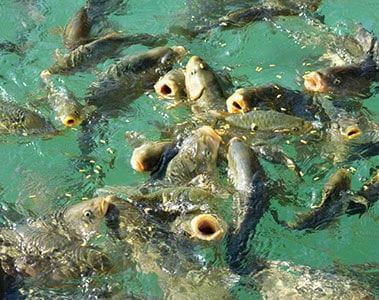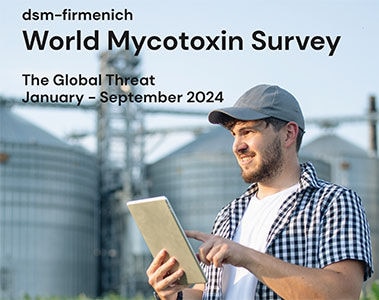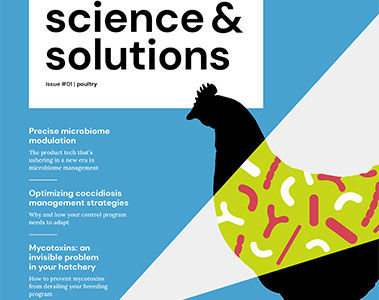| Metabolite | Description |
| Tryptophol | Tryptophol is produced by Aspergillus ssp. and has cytotoxic and cytostatic effects in vitro. It is genotoxic in lymphocytes and induces apoptosis in leukemic blood monocytes. In vivo it induces sleep in mice, rats, cats and humans. |
| Aurofusarin | Moniliformin is shown to be toxic to rodents and poultry. Toxic effects include damage to the heart muscle, respiratory distress, decreased feed intake and body weight gain and impaired immune function. |
| Moniliformin | Abscisic acid (ABA) is a plant hormone that regulates numerous aspects of plant growth, development, and stress responses. |
| Asperglaucide | Asperglaucide is an amide with anti-inflammatory, antibacterial, antioxidant, and anticancer properties. Asperglaucide inhibits production of nitric oxide (NO), prostaglandin E2 (PGE2), and IL-1β. It is active against Gram-negative bacteria and has antioxidant activity. |
| Equisetin | Equisetin is produced by Fusarium ssp. and inhibits the DNP-stimulated ATPase activity of rat liver mitochondria and mitoplasts. It has weak activity against Gram-positive bacteria. |
| Flavoglaucin | Flavoglaucin is produced by Aspergillus ssp. |
| Siccanol | Siccanol, also named as Terpestacin is produced by Arthrinium ssp. |
| Infectopyron | Infectopyron is an alpha-pyrone and is a common Alternaria toxin that exerts cytotoxic effects. However, there is not much information on the threshold for this reasonably recently discovered toxin. |
| Enniatin B | Enniatins are toxic to different mammalian cell lines in vitro. The effect of chronic exposure is currently unknown. According to the results of in vitro studies, enniatins may affect the immune system and the bioavailability of pharmaceuticals. Enniatins were shown to accumulate in the eggs of laying hens, but detected levels were likely no cause for concern. Ennitatins exhibit cytotoxic effects on intestinal porcine epithelial cells (IPEC-J2). |
| Culmorin | Culmorin is produced by Fusarium ssp. and exhibits strong synergistic effects with DON. |
| Brevianamid F | Brevianamide F is produced by Aspergillus ssp. It has activity against some Gram-positive bacteria and exerts hepatotoxic effects. |
| Emodin | Emodin is produced by Aspergillus ssp. It exerts genotoxic, cytotoxic, antitumor effects, as well as antibacterial, anti-inflammatory and immunosuppressive activities. It induces embryonic toxicity in mouse blastocysts and is nephrotoxic in rats. Clinical symptoms in 1-day-old cockerels included loss of appetite, accumulation of fecal material with acute epidermal irritation around the cloaca, general debilitation, and mortality within 5 days of ingestion. |
| Abscisic acid | Abscisic acid (ABA) is a plant hormone that regulates numerous aspects of plant growth, development, and stress responses. |
| Beauvericin | Beauvericin is toxic to different mammalian cell lines in vitro. According to published studies, acute exposure to beauvericin was not toxic to animals. However, the effect of chronic exposure is currently unknown. According to the results of in vitro studies, enniatins may affect the immune system and the bioavailability of pharmaceuticals. Enniatins were shown to accumulate in the eggs of laying hens, but detected levels were likely no cause for concern.Beauvericin exhibits cytotoxic effects on intestinal procine epithelial cells (IPEC-J2) |
| Daidzin | Genistin is a phytoestrogen. Phytoestrogens are polyphenolic compounds that are produced by plants. They primarily occur in legumes such as soy, clover and alfalfa. Phytoestrogens are structurally similar to estrogens, the primary female sex hormones. Due to this similarity, phytoestrogens bind to estrogen receptors and therefore exert estrogenic effects in animals. |
| Asperphenamate | Asperphenamate is produced by Aspergillus flavipes. It has a weak antitumor activity. |
| Daidzein | Daidzein is a phytoestrogen. Phytoestrogens are polyphenolic compounds that are produced by plants. They primarily occur in legumes such as soy, clover and alfalfa. Phytoestrogens are structurally similar to estrogens, the primary female sex hormones. Due to this similarity, phytoestrogens bind to estrogen receptors and therefore exert estrogenic effects in animals. |
| Enniatin B1 | Enniatins are toxic to different mammalian cell lines in vitro. The effect of chronic exposure is currently unknown. According to the results of in vitro studies, enniatins may affect the immune system and the bioavailability of pharmaceuticals. Enniatins were shown to accumulate in the eggs of laying hens, but detected levels were likely no cause for concern. Ennitatins exhibit cytotoxic effects on intestinal porcine epithelial cells (IPEC-J2). |
| Tenuazonic acid | Tenuazonic acid showed toxic effects to rodents and chickens. EFSA concluded that adverse effects to chickens cannot be ruled out for chickens. In 2022, EU released indicative levels for TeA in certain foods for humans and esp. for infant consumption. |
| Bikaverin | Fungal metabolite, inhibitory activity agains mammalian cell lines reported |
| Neoechinulin A | Neoechinulins are metabolites produced by fungi or plants. Its pharmaceutical properties are under investigation. |
| Fellutanine A | Fellutanine A is a bio-active diketopiperazine alkaloid isolated from the cultures of Penicillium fellutanum. |
| Genistin | Genistin is a phytoestrogen. Phytoestrogens are polyphenolic compounds that are produced by plants. They primarily occur in legumes such as soy, clover and alfalfa. Phytoestrogens are structurally similar to estrogens, the primary female sex hormones. Due to this similarity, phytoestrogens bind to estrogen receptors and therefore exert estrogenic effects in animals. |
| Alternariolmethylether | no acute toxicity, cytotoxic and mutagenic in vitro, effects on reproductive & immune system in vitro. |
| 15-hydroxyculmorin | 15-Hydroxyculmorin is produced by Fusarium ssp. It is a trichothecene precursor and co-occurs with culmorin and DON. It is rather non-toxic. |
| Zearalenone | Zearalenone is an estrogenic toxin, i.e. it acts like the endogenous steroidal sex hormone estradiol thereby compromising the fertility and reproduction of animals. Furthermore, ZEN has been shown to be hepatotoxic, hematotoxic, immunotoxic and genotoxic. |
| Alternariol | no acute toxicity, cytotoxic and mutagenic in vitro, effects on reproductive & immune system in vitro. |
| Genistein | Genistein is a phytoestrogen. Phytoestrogens are polyphenolic compounds that are produced by plants. They primarily occur in legumes such as soy, clover and alfalfa. Phytoestrogens are structurally similar to estrogens, the primary female sex hormones. Due to this similarity, phytoestrogens bind to estrogen receptors and therefore exert estrogenic effects in animals. |
| Altersetin | Altersetin is produced by Alternaria ssp.and is showing antibacterial properties. |
| Deoxynivalenol | Deoxynivalenol induces emesis and feed refusal resulting in reduced weight gain. Other effects include immunotoxicity, hematotoxicity and myelotoxicity, as well as reproductive toxicity. It furthermore causes intestinal lesions and compromises the intestinal barrier function. DON enhance signs of PRRSV infection and caused vaccination failure in a vaccination-challenge trial. |
| Rugulusovin | Rugulusovin is produced by Aspergillus ssp. |
| Chrysogin | Chrysogine is a yellow pigment produced by Penicillium chrysogenum and other filamentous fungi. |







